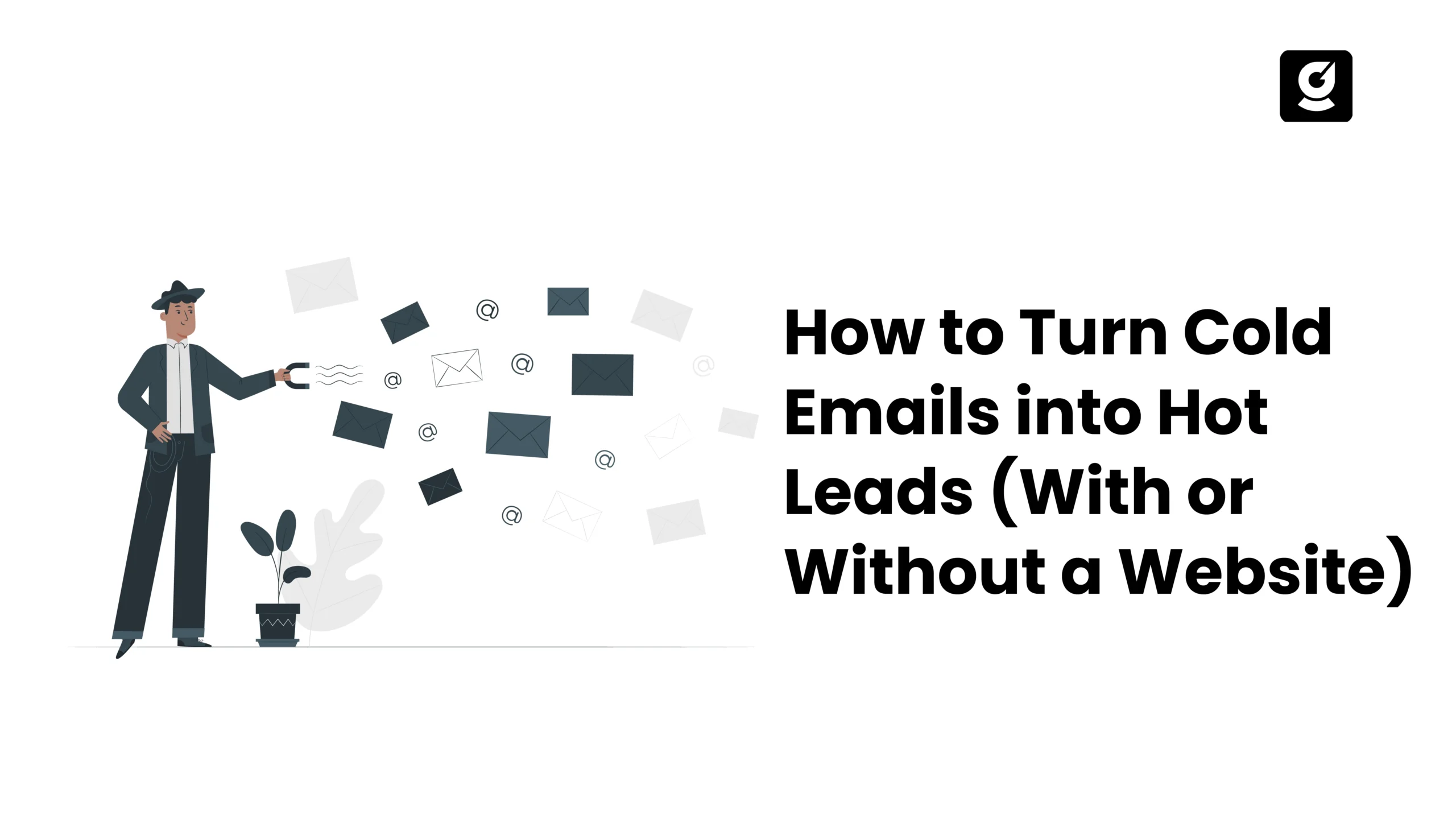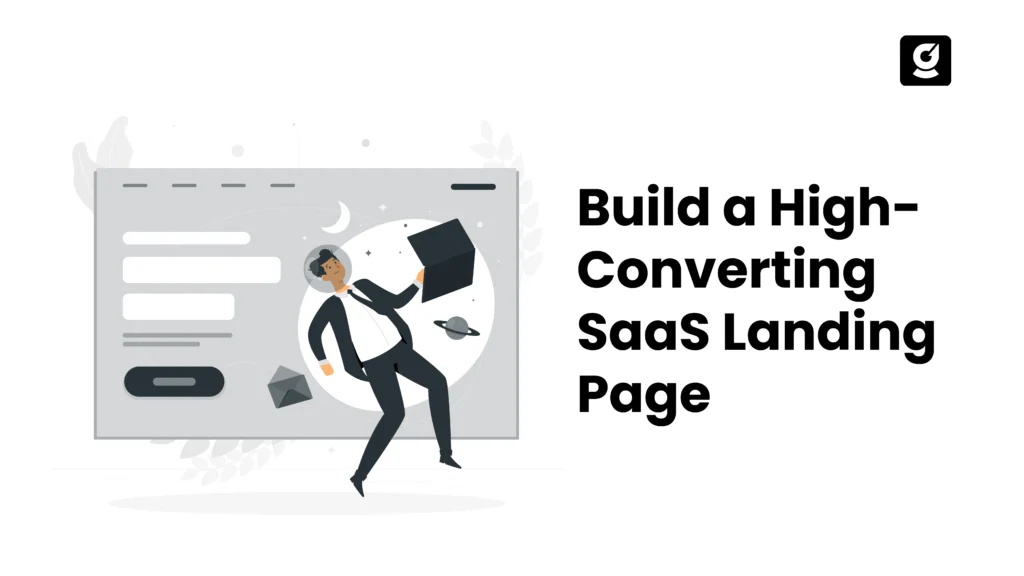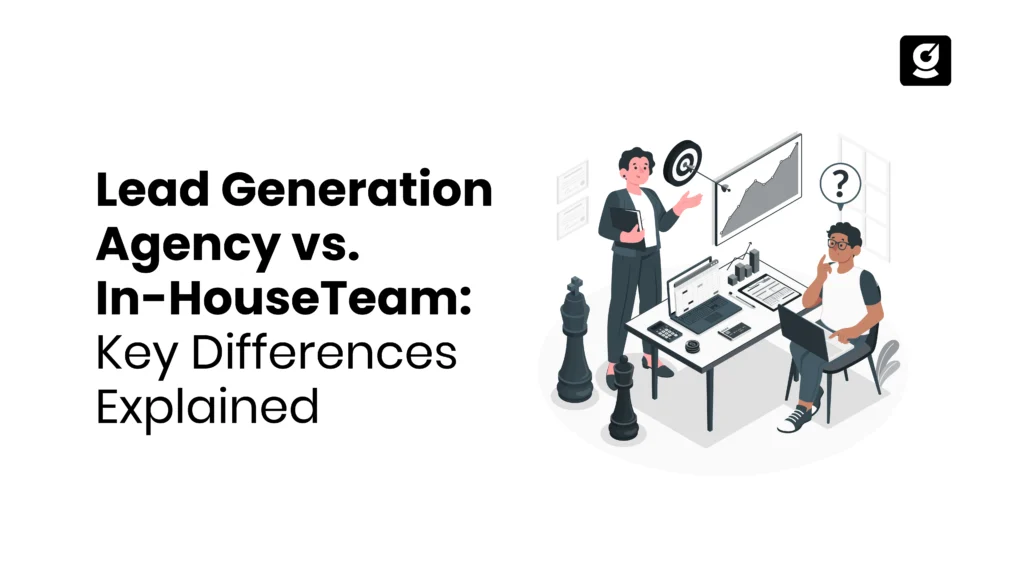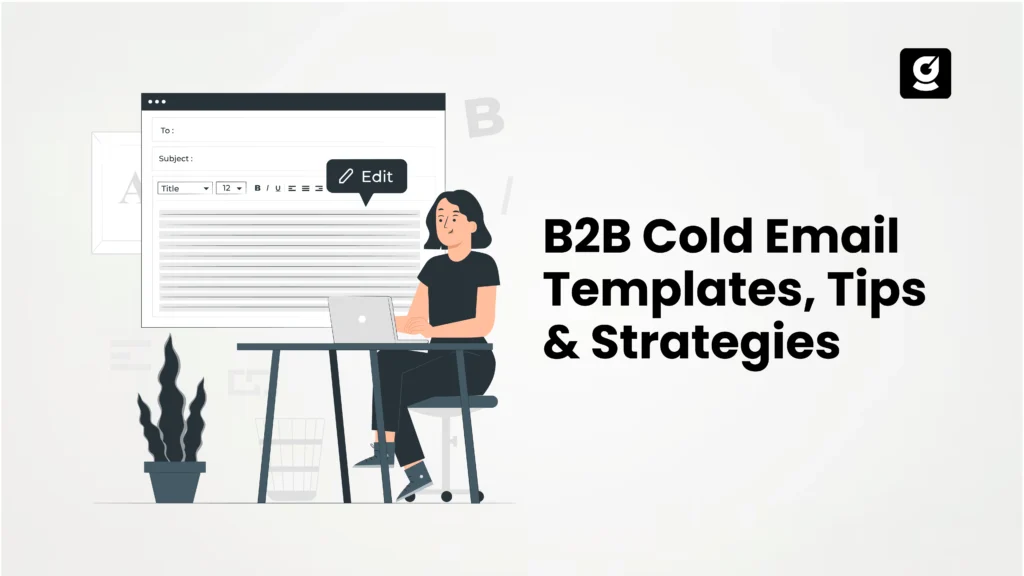Let’s say, you have a million-dollar business idea, a great product or service that you believe could change the lives of the people, and you are ready to share it to the world. But there’s one minor issue, you don’t own a website. Maybe you’re just getting started, or maybe you’re concerned about the expense and time it takes to create one.
You’ve heard about cold email marketing, but you’re not sure if it can work without a website. Does this sound familiar?
If you’re nodding your head, you’re not alone. Many entrepreneurs and small business owners face this dilemma. They wonder if they can skip the website and still succeed with cold email marketing. The good news? You might not need a website to get started.
In this blog, we’ll explain everything in simple terms. We’ll explain what cold email marketing is, if you need a website to make it work and provide simple steps to get started. And by the end, you’ll learn how to use cold emails to grow your businesses. And if you want support, we’re with you.
What is Cold Email Marketing?
Cold email marketing is when you send emails to potential customers or clients who don’t know you yet. It’s like introducing yourself to someone new, but instead of doing it face-to-face, you’re doing it through email.
The big difference between cold emails and spam is that cold emails are personalized and offer something useful. When done right, cold email marketing can help you find leads, close deals, and grow your business. Several cold email statistics indicate that well written and targeted emails are more likely to be opened and responded to, making them a powerful tool for business expansion.
The best part? You don’t need a lot of money or a fancy website to start. All you need is a clear message, a list of people to contact, and the willingness to put in some effort.
Do You Need a Website for Cold Email Marketing?
The short answer? Maybe. It depends on the goals and needs you have with your business:
1. Cold Emails Go Straight to Your Prospect
With cold emails, you’re reaching out directly to your potential customers. You’re not waiting for them to find you through a website or social media. You’re taking the first step.
2. You Can Build Trust Without a Website
A lot of people think you need a website to look professional. But that’s not always true. A well-written cold email that shows you understand your prospect’s needs and offers a solution can build trust just as well as a website.
3. It’s Affordable
Building a website can be expensive. You need to buy a domain, pay for design, and maybe even hire a developer. Cold email marketing, on the other hand, is much cheaper. All you need is an email account, a list of prospects, and a good plan.
4. You Can Test Your Idea Fast
If you’re just starting out, cold emails allow you to validate your business idea without much investment. You can see if there’s interest, get feedback, and iterate before you spend money on a website.
When a Website Can Help?
While you don’t always need a website, there are situations where having one can give you an edge:
1. You Want to Build Credibility
Having a website can also help make your business seem more professional and trustworthy. It’s a space for people to learn more about your, to see testimonials, a sense of your brand… If you’re targeting big clients or investors, a website can help you make a strong first impression.
2. You’re Selling a Complex Product or Service
If your offer requires more explanation, a website can provide the space to do that. You can include detailed descriptions, case studies, FAQs, and more. This is especially important if you’re in a competitive industry where customers want to do their research before making a decision.
3. You Want to Capture Leads
A website with a lead capture form can help you grow your email list and nurture leads over time. Even if you’re using cold emails to start conversations, having a website can give you a place to direct people for more information or to take the next step. You can also seek assistance from a cold email agency to simplify the process and overcome challenges in email creation.
How to Make Cold Emails Work Without a Website
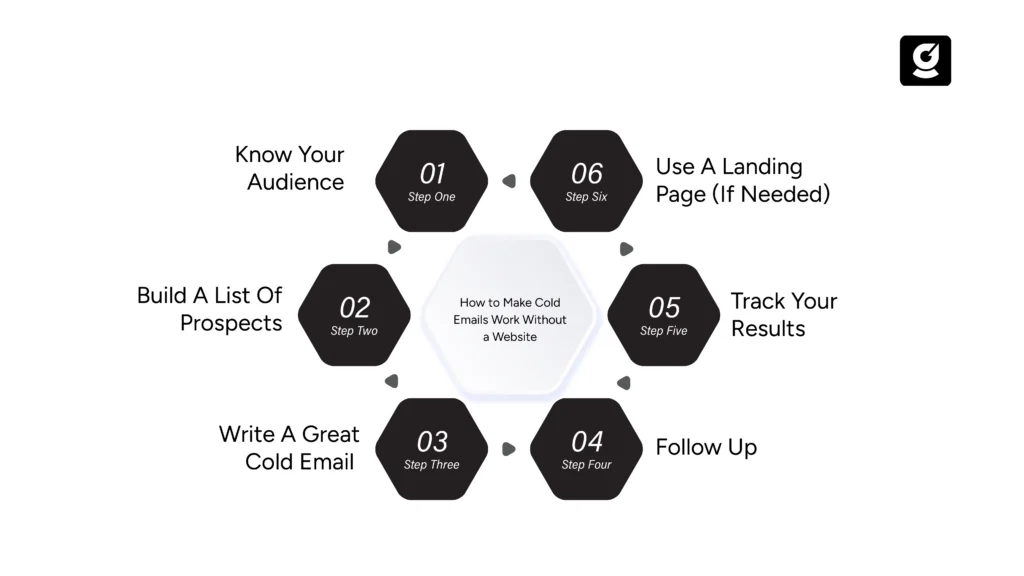
1. Know Your Audience
The first step is to identify your ideal customers. What problems do they have? What problems do they want to solve? Be as specific as possible—the more specific you are, the better your emails will perform.
Before sending emails, figure out who your ideal customers are. Ask yourself:
- What problems do they have?
- What kind of solutions are they looking for?
- Why would they be interested in your offer?
The better you know them, the more likely you will be to write emails that get their interest.
2. Build a List of Prospects
Once you know who you want to reach, you need a list of potential customers (prospects). You can find them on:
- Business Directories
- Social media groups
- Websites of companies in your industry
Make sure your list is correct. If you send emails to the wrong addresses, they will bounce (fail to deliver), which can hurt your email reputation.
3. Write a Great Cold Email
A good Saas cold email is short, clear, and extremely insightful. You can also get a variety of cold email templates to spark new ideas. Here’s a simple format you can use:
- Subject Line: Keep it short and interesting, like:
- “Quick question about [Prospect’s SaaS product]”
- “I can help with [Specific Problem in their SaaS business]”
- Opening Line: Start with something personal, like:
- “I saw your SaaS company recently launched [New Product/Service]. Congrats!”
- “I came across your post about [Topic] and found it really interesting.”
- Value Proposition: Tell them how you can help. For example:
- “I help SaaS businesses like yours get more leads using [Your Service].”
- “I noticed your website isn’t ranking well on Google—I can fix that.”
- Call to Action (CTA): Make it easy for them to reply. Examples:
- “Would you be open to a quick call this week?”
- “Let me know if you’d like more details, and I’ll send them over.”
4. Follow Up
Many people won’t reply to your first email—this is normal. They might be busy or just missed it. That’s why follow-ups are important.
Send a reminder a few days later: “Just checking if you saw my last email.”
Keep it short and friendly. Don’t be pushy. Each follow-up should add value. For example:
Share a case study.
Offer a free resource.
Most people reply after 2-3 follow-ups, so stay consistent!
5. Track Your Results
You should keep an eye on how your emails are going. Track things like:
- Open Rate – How many people open your emails?
- Reply Rate – How many respond?
- Conversion Rate – How many turn into paying customers?
This will help you improve your emails over time. If people aren’t responding, you can tweak your subject lines or change your approach.
6. Use a Landing Page (If Needed)
If you need to share more details but don’t want a full website, a landing page is a good option. This is a simple one-page site that explains what you offer and has a way for people to contact you.
You can create one easily using:
- Carrd (for simple pages)
- Leadpages (for lead generation)
- Google Sites (free and easy to use)
A landing page isn’t always necessary, but it can help if prospects ask for more information.
When Should You Build a Website?
You don’t need a website to start marketing your business—cold emails can still work without one. But at some point, having a website makes things easier and helps your business grow. Here’s when it makes sense to build one:
1. You Need a Place to Share Information
If you have multiple products or services, your website is just an online brochure. Rather than having to explain everything over e-mails or messages, you can just direct people to your website, which includes details, prices and answers to frequently asked questions.
2. You Want to Build Trust
When businesses put a professional face online, people trust them. Having a website increases your credibility and helps potential customers view reviews, testimonials, or case studies. It gives them confidence that you’re a real and trustworthy business.
3. You’re Growing and Need to Save Time
As your business grows, answering the same questions over and over gets tiring. A website can help by offering FAQs, contact forms, and even online payment options. This makes your work easier and saves you time.
Do You Need a Website for Cold Email Marketing?
Now that you’ve got the blueprint, it’s time to take action. Throughout this guide, we’ve walked through the essentials of why cold emailing is such a powerful tool for reaching decision-makers, nurturing leads, and driving growth in the B2B space.
But crafting high-converting cold emails isn’t just about sending messages – it’s about strategy, personalization, and timing.
That’s where growth.cx comes in. We are a cold email marketing agency, specializing in done-for-you cold email outreach, helping businesses generate high-quality leads with personalized, data-driven campaigns. This includes prospect research, email copywriting, automation setup, and performance tracking, ensuring you get maximum responses and conversions without the hassle.
Don’t leave your cold email lead generation to guesswork. Partner with growth.cx today and watch your pipeline fill up with qualified leads.

